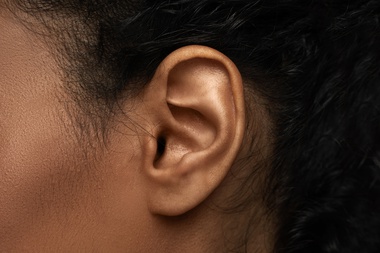Ear Surgery
Ear Surgery or otoplasty is a procedure to improve the shape, size and proport...

Earlobe reconstruction is often sought after due to damage or changes in earlobe appearance. Heavy earrings can lead to stretched or elongated earlobes, while aging can result in earlobes that hang low. Such changes often prompt individuals to seek earlobe rejuvenation to regain a more youthful appearance.
Consultation Process
The consultation process for earlobe reconstruction begins with an assessment by a qualified plastic surgeon. During this initial meeting, the surgeon examines the extent of earlobe damage, whether due to heavy earrings, split earlobes, or other causes. Patients discuss their goals and expectations, while the surgeon proposes suitable surgical procedures, such as a bilobed flap or simple repair techniques.
Following the evaluation, the surgeon explains the earlobe reconstruction procedure in detail, highlighting potential risks and the expected recovery process. Patients receive information about anesthesia options, and the approximate duration of the earlobe surgery. This meeting is crucial for understanding the healing process, timeline for returning to normal activities, and any postoperative care necessary.
Prior to the procedure, the surgeon will review the patient’s medical history to ensure they are a suitable candidate for earlobe repair surgery. Preparations such as avoiding certain medications are discussed. This thorough consultation ensures patients are well-informed, setting realistic expectations, and securing a successful outcome for their aesthetic surgery.
The Surgical Procedure
Earlobe reconstruction involves making a small wedge incision directly on the earlobe to remove damaged tissue and correct the earlobe shape. This type of earlobe repair surgery can be performed as an office procedure under local anesthesia, minimizing recovery time. Patients should be able restore normal activities quickly, as the recovery process generally involves minimal discomfort and a straightforward healing process.
Post-Operative Care
Patients are advised to follow post-operative care instructions carefully to ensure optimal results, as swelling and bruising can be expected after surgery. To minimize these effects, apply cold compresses for 10-15 minutes every few hours. Keep your head elevated while resting to reduce swelling. Swelling should gradually decrease within a few days.
Mild discomfort is normal after earlobe reconstruction surgeries. Over-the-counter pain medications, such as ibuprofen or acetaminophen, can help alleviate pain.
To minimize the appearance of scars, keep the area moisturized and protected from the sun.
Earlobe reconstruction is a cosmetic procedure designed to repair damage or defects in the earlobes. Ideal candidates for this surgical procedure are individuals experiencing earlobe issues such as split earlobes, elongated earlobes, or concerns about their earlobe shape. Both men and women affected by these issues can benefit from earlobe repair surgery.
Potential candidates should be in good physical health and have realistic expectations about the outcomes.
During a consultation, the plastic surgeon will assess the earlobe, taking into account excess skin and soft tissue. They will discuss the surgical repair options, the healing process, and what recovery will entail. Most patients can return to normal activities shortly after their earlobe surgery, but a full recovery process should be closely followed for optimal results. A successful earlobe reconstruction procedure can restore both the aesthetic appearance and functionality of the earlobe.
Your medical history is reviewed to identify any underlying health issues that may affect surgery or healing. Conditions such as diabetes, clotting disorders, or skin infections may impact your eligibility.
The procedure is usually performed under local anesthesia, which numbs the region and keeps you comfortable while allowing you to remain awake.
The duration of the procedure typically ranges from 30 minutes to an hour, depending on the complexity of the reconstruction required.
It's advisable to avoid blood-thinning medications like aspirin and certain supplements that may increase bleeding, as well as smoking, which can impair healing.
While some changes in sensation are normal due to nerve manipulation during surgery, most patients experience a return to normal sensation as the earlobe heals.
Watch for increased redness, swelling, drainage of pus, or a fever. If you notice these signs, contact us immediately.